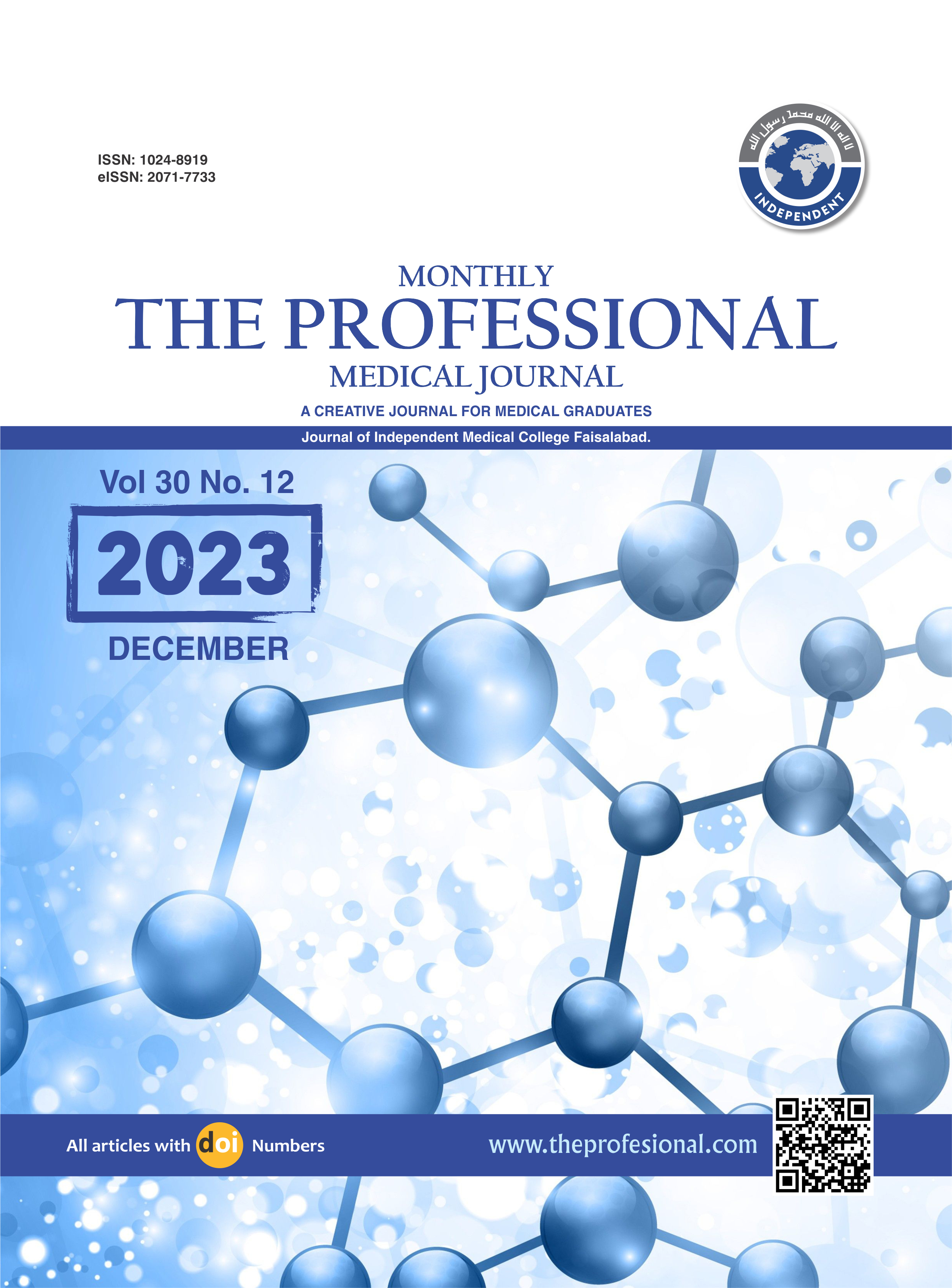Correlation of HbA1c with red cell width distribution and other red cell indices in Type II diabetic females.
DOI:
https://doi.org/10.29309/TPMJ/2023.30.12.7832Keywords:
Diabetes, Diagnostic Marker, HbA1c, RDWAbstract
Objective: To assess the correlation of HbA1c with hemoglobin concentration, RWD, and other red cell indices in Type II diabetes mellitus female patients. Study Design: Cross-sectional study. Setting: Department of Physiology, Al Nafees Medical College, and Pakistan Institute of Medical Sciences, Islamabad. Period: January 2019 to December 2020. Material & Methods: The study included 70 adult female diabetic patients, adhering to International Diabetes Federation guidelines. Exclusion criteria encompassed uncontrolled diabetes, pregnancy, renal issues, cardiac failure, and hemoglobinopathies. Laboratory tests, such as Complete Blood Count and HbA1c measurements, were conducted. SPSS version 23 was used for statistical analysis, employing mean, standard deviation, and Pearson's correlation to assess relationships among HbA1c, hemoglobin, Red Cell Distribution Width (RDW), and other red cell parameters. Results: A total of 70 female patients with diagnosed Type II diabetes mellitus were included in our study with a mean age of 40.45±12.70 years. The Mean±SD of study variables like HbA1c, hemoglobin, MCV, MCHC, RDW, and FBS of the patients was 5.91±0.89%, 11.23±1.59 gm/dl, 76.32±9.50fl, 31.02±3.39mg/dl, 12.78±1.51 and 100.53±15.52mg/dl respectively. A significant correlation between HbA1c and RDW was found and showed that both variables were positively correlated with each other. (r= 320, p=0.001). Conclusion: RDW correlates with HbA1C in female Type II diabetes patients, suggesting CBC, including RDW, as a cost-effective diagnostic marker alongside HbA1c for glycemic status assessment.
Downloads
Published
Issue
Section
License
Copyright (c) 2023 The Professional Medical Journal

This work is licensed under a Creative Commons Attribution-NonCommercial 4.0 International License.


